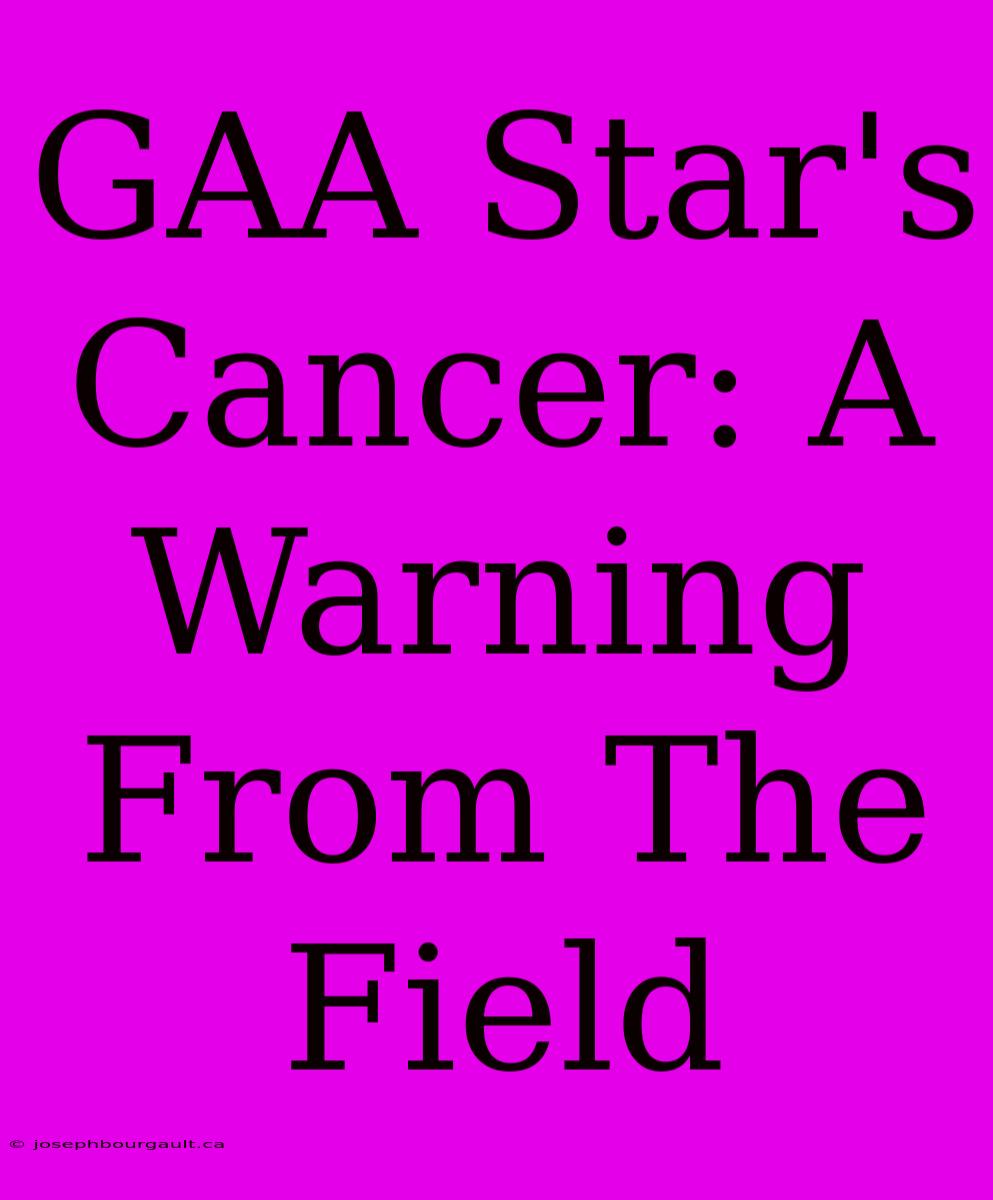GAA Star's Cancer: A Warning From The Field
The recent news of a prominent GAA star's cancer diagnosis has sent shockwaves through the Irish sporting community, raising concerns about the potential link between the sport and the disease. While more research is needed to definitively establish a causal relationship, the incident serves as a stark reminder of the importance of prioritizing health and well-being, both on and off the field.
The Need for More Research
While there's no concrete evidence to prove a direct link between GAA and cancer, studies have explored potential connections between head injuries and long-term health risks, including brain tumors. The repetitive impact and physical exertion involved in Gaelic games could potentially contribute to chronic health issues in the long run.
A Call for Awareness
The GAA star's diagnosis underscores the need for greater awareness surrounding the health risks associated with athletic pursuits. It's crucial for athletes and coaches to prioritize preventive measures, including:
- Regular medical checkups: Early detection is key in combating any potential health risks.
- Proper training techniques: Encouraging safe and effective training methods can reduce the risk of injuries.
- Protective gear usage: Utilizing appropriate gear can minimize the risk of head injuries.
- Hydration and nutrition: Adequate hydration and a balanced diet are essential for overall health and recovery.
- Mental health support: Athletes should be encouraged to seek support for mental health challenges.
Beyond the Pitch
The GAA star's story is not merely a sports headline; it's a human story that resonates with individuals across all walks of life. It's a reminder of the importance of taking care of our health, regardless of our profession or passion.
Looking Forward
The incident serves as a catalyst for further research into the potential health risks associated with sports like GAA. It also highlights the necessity of creating a culture of health and well-being within the sporting community. By embracing preventive measures, promoting open communication, and fostering a culture of care, we can ensure the safety and long-term health of our athletes, allowing them to pursue their passions without compromising their well-being.

